Thirteen days. Twelve states. Six national parks. Two important monuments. Three state parks. 5,330.2 miles. 2,832 photos. Zero tire flats. Seven nights camping in tents. One glorious lightning-loaded rainstorm. One night spent sleeping in a car. One lovely evening at a farm with friends. Four happy family members. Countless memories.
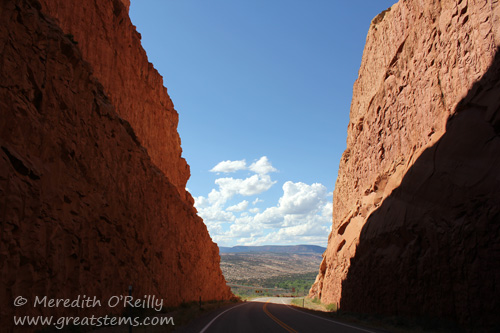 We just returned from our 2012 summer vacation, in which the boys and I left Austin and headed west to Utah, north to Grand Teton and Yellowstone (where Michael joined us via airplane), east to the Badlands, south to our friends’ farm in Kansas, and then all the way home again. It was our longest road trip to date. Combine that with our trip to the Everglades in the spring, and we have really managed to tour a big chunk of the United States in this year alone!
We just returned from our 2012 summer vacation, in which the boys and I left Austin and headed west to Utah, north to Grand Teton and Yellowstone (where Michael joined us via airplane), east to the Badlands, south to our friends’ farm in Kansas, and then all the way home again. It was our longest road trip to date. Combine that with our trip to the Everglades in the spring, and we have really managed to tour a big chunk of the United States in this year alone!
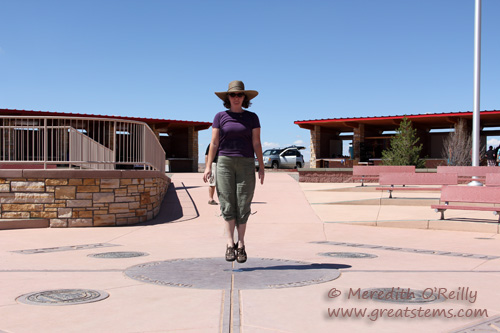
Jumping over Colorado, Utah, Arizona, and New Mexico at the Four Corners Monument
Our first primary destination was the area of Bryce Canyon National Park in southern Utah. But we took a slight detour along the way so that we could stand at the Navajo Nation’s Four Corners Monument, where Colorado, Utah, Arizona, and New Mexico meet. I decided that jumping over four states at once seemed better than just standing there. Yes, in fact, I am a goddess.

The Fremont River flows red when summer rains wash red silt from the surrounding landscape.
From there, we emerged ourselves fully in the grand beauty that is southern Utah. Just when you get used to one spectacular mountainous view, you drive around a curve and suddenly everything looks completely different, as seen in the top photo of this post.
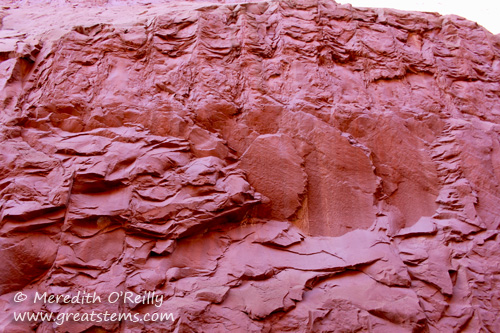
There’s a reason why this area of Utah is called red rock country.
Our first night in Utah, we camped at Escalante Petrified Forest State Park. It’s a relatively small but scenic state park located along Scenic Byway 12. There’s a lake near the campground, but it’s decidedly swim-at-your-own-risk, and not for the usual reasons. When we arrived at the park, the ranger handed us a detailed info sheet about something that sounded appalling — an aquatic parasite that causes something called swimmer’s itch. It turns out that this parasite is in Escalante’s Wide Hollow reservoir as well as in some of the other lakes in Utah state parks during the summer. No, thank you — we’ll just hike, we said. And hike we did.
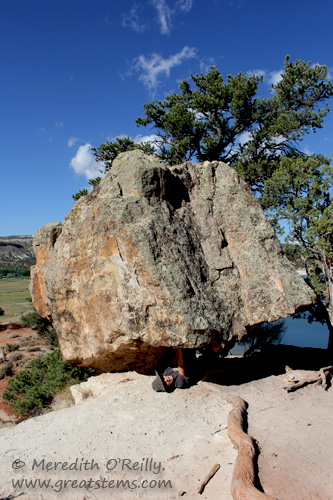
Balanced Rock at Escalante Petrified Forest State Park
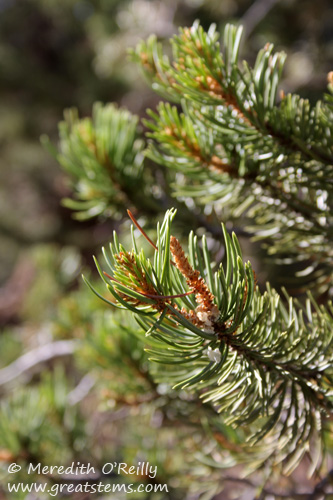
Pine at Escalante Petrified Forest SP
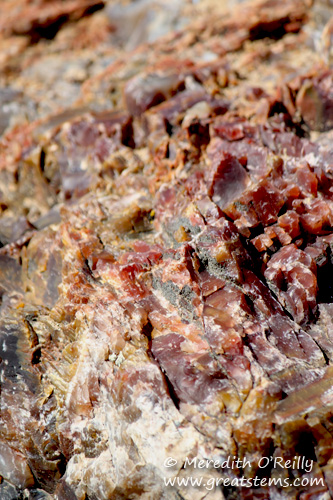
Petrified wood at Escalante
The park is named for colorful petrified wood logs and thousands of petrified wood bits located within the hiking area.
 But we were just as enthralled with the many skinks and other lizards we saw as we walked along the trails. In fact, we got a little competitive about it, seeing who could find the most lizards, some worth two points if they were less common than others. Snakes were worth 15 points, but alas we didn’t find any.
But we were just as enthralled with the many skinks and other lizards we saw as we walked along the trails. In fact, we got a little competitive about it, seeing who could find the most lizards, some worth two points if they were less common than others. Snakes were worth 15 points, but alas we didn’t find any.
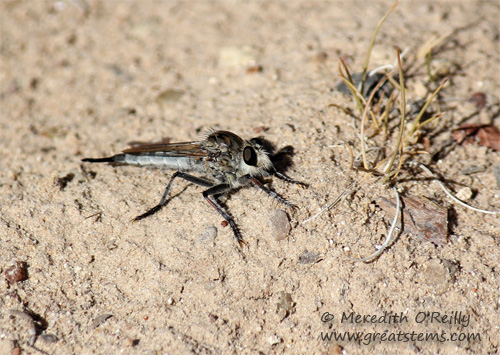
Robber fly
Interesting wildlife like robber flies had their own category.
From Escalante Petrified Forest State Park, we headed west along Scenic Byway 12 to Bryce Canyon National Park. Our first taste of Bryce began with Mossy Cave, a short hike at an area within Bryce Canyon National Park but well before you arrive at the visitor center and park entrance.
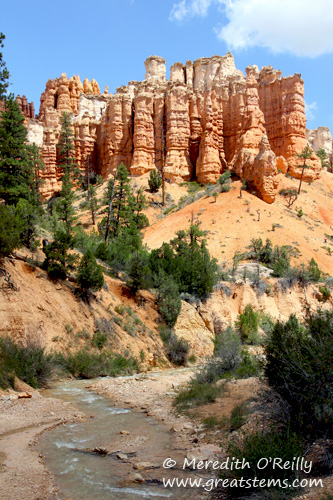
View at Mossy Cave trail, Bryce Canyon, UT
Here one can already see the hoodoos for which Bryce is known, and which I’ll explain about shortly, and a scenic waterfall, stream, and small cave add additional beauty.
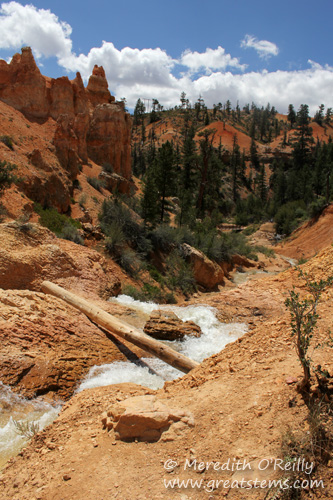
View from above the waterfall at Mossy Cave, Bryce Canyon, UT
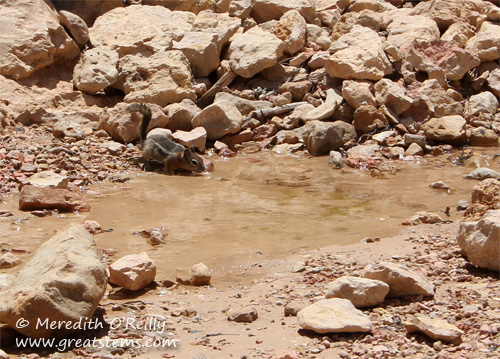
Golden-mantled ground squirrel getting a quick drink
Bryce Canyon National Park really has to be seen in person to be believed. It’s unlike any place I’ve ever traveled. It’s not a true canyon, where a flowing river shapes the landscape. Instead, ice and rainwater have eroded away limestone and other rock to form vast amphitheaters of tall heavy-topped spires called hoodoos.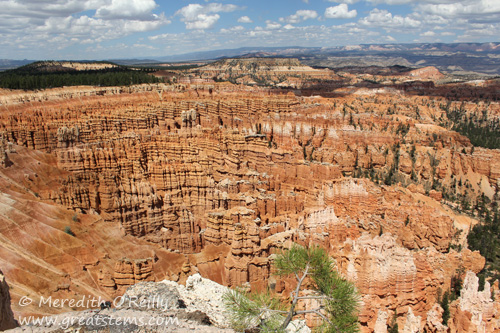
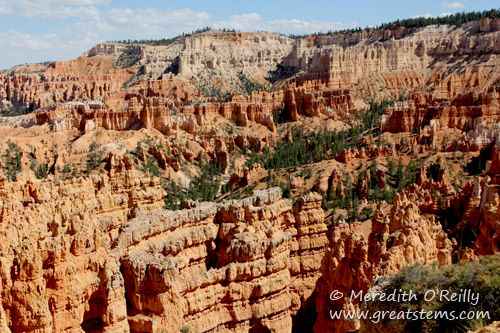
There are many different scenic viewpoints accessible via a driving tour or by hiking along the rim, and other trails take you down below the rim.
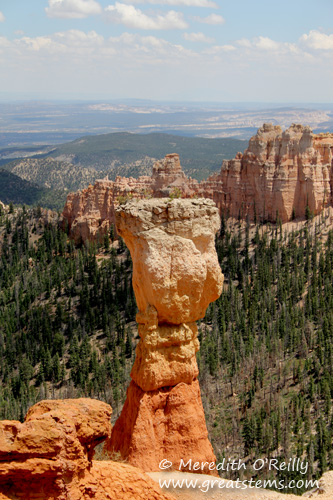
A hoodoo, a tall limestone-topped spire formed by erosion
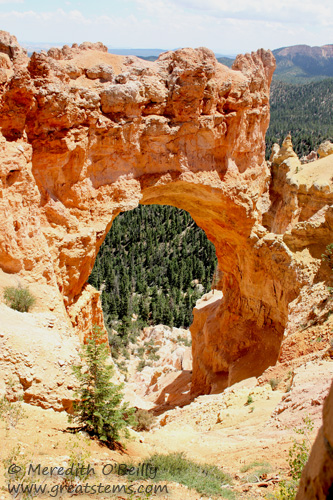
An arch at Bryce Canyon, though its name is Natural Bridge
I fell in love with Bryce. How could one not?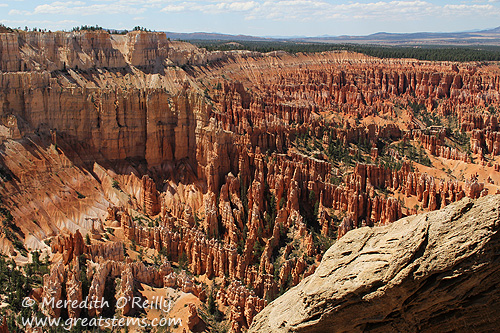

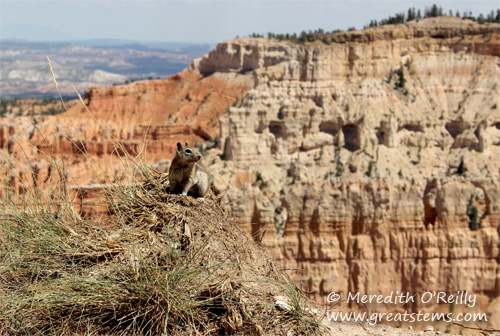
A Golden-mantled ground squirrel on one of the points of Bryce Canyon, UT
We saw birds and many a squirrel at Bryce. Surprisingly, we didn’t see a single lizard, compared to the dozens we’d counted at Escalante Petrified Forest just a few miles away.
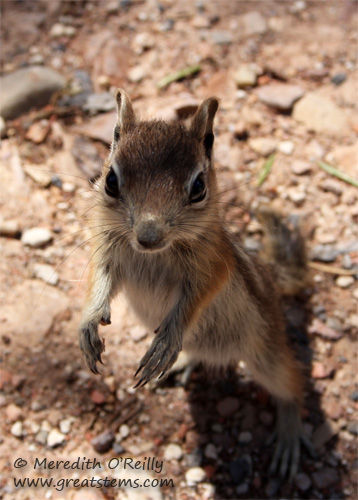
This young squirrel came looking for food, but when we didn’t offer anything, it moved away quickly.
At Sunset Point, we took a trail down below the rim, one called Navajo Loop.
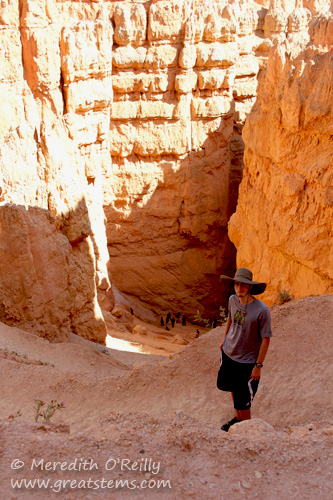
Navajo Loop, Bryce Canyon
Look into the depths, and you’ll get an idea of the downward trek.
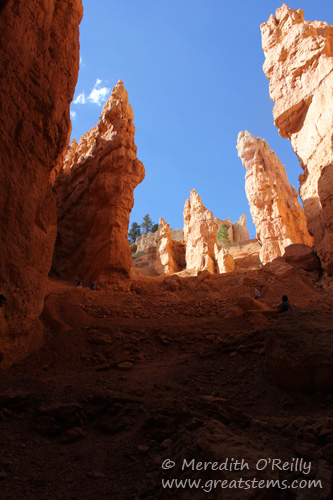
View from the bottom of the rim at Bryce Canyon’s Sunset Point
It was worth it.
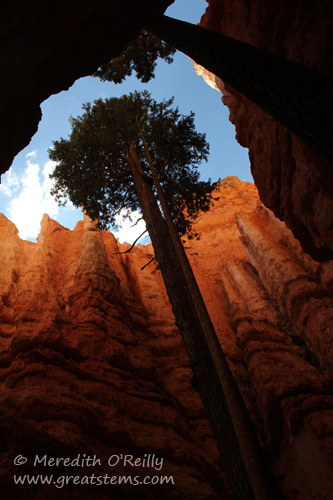
A tree grows tall in a sunlit nook of the Navajo Loop at Bryce.
Trees appear in sunlit spots within the narrow canyon, and before you know it…
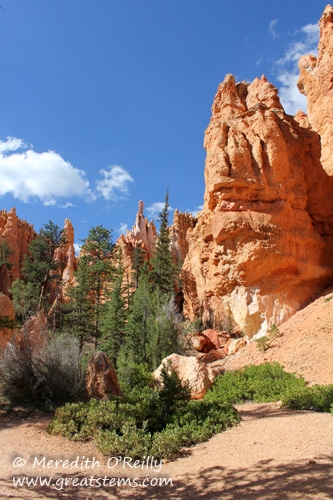 it opens out to a much bigger and colorful scene, where the trail continues.
it opens out to a much bigger and colorful scene, where the trail continues.
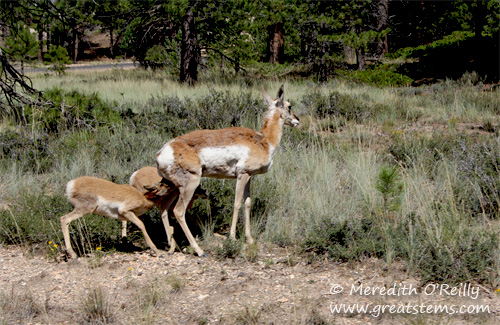
Pronghorns
As we were leaving, we saw this pronghorn family slowly crossing the road, a park ranger protecting them from moving cars. The young fawns nursed the whole way.
From beautiful Bryce, we headed toward Zion, camping overnight before starting the next day’s adventure.
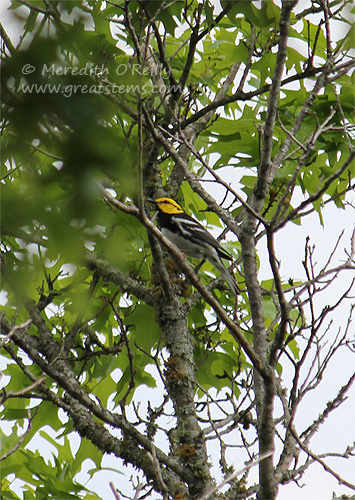
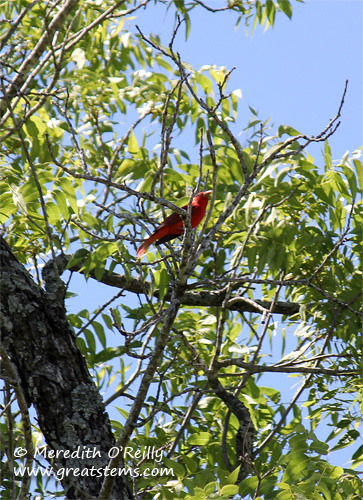
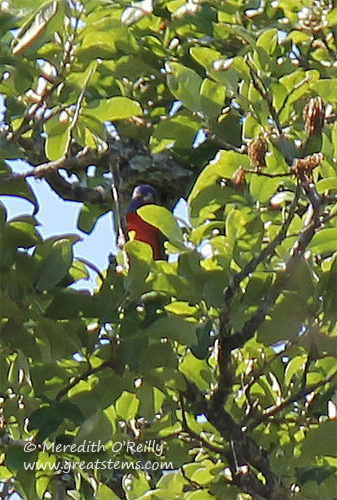
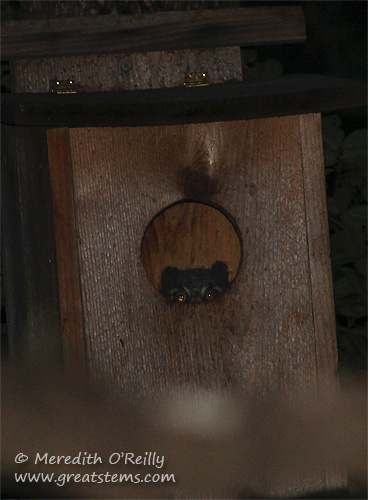
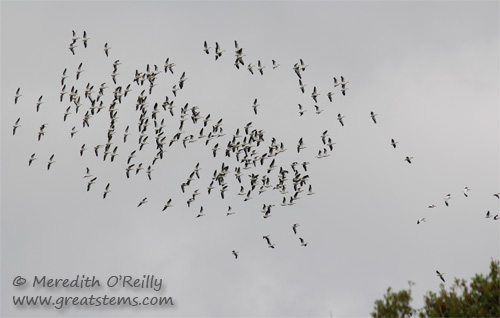
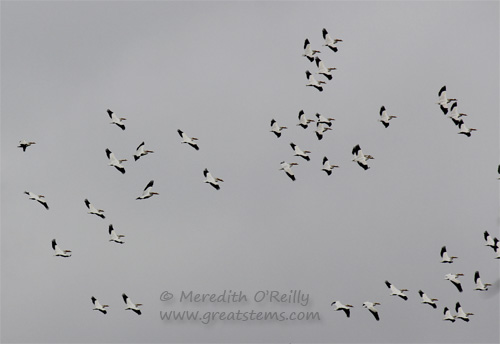
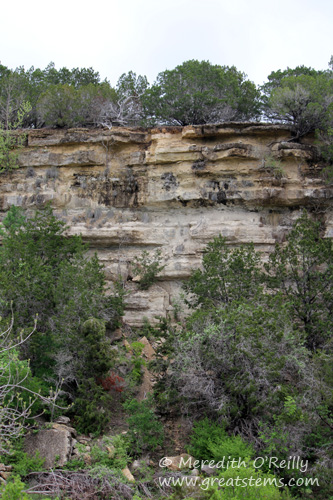 Can you see the American Raven in this picture? Good luck.
Can you see the American Raven in this picture? Good luck.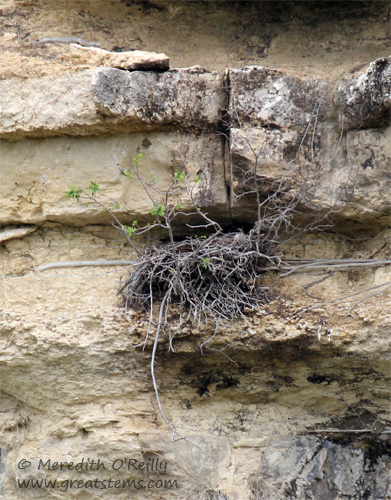 Okay, she’s in a nest. Now go back and find the nest. Then, try to describe its location to someone and see if they can find it. Now you know what it’s like to be a birder!
Okay, she’s in a nest. Now go back and find the nest. Then, try to describe its location to someone and see if they can find it. Now you know what it’s like to be a birder!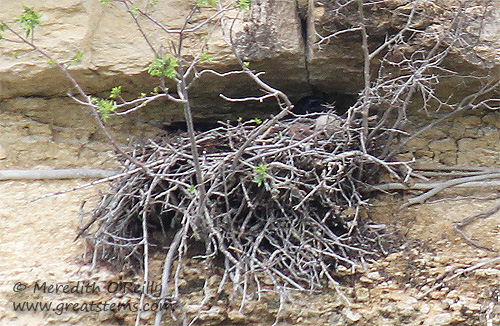
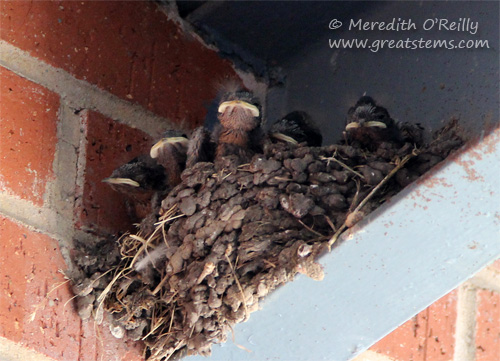
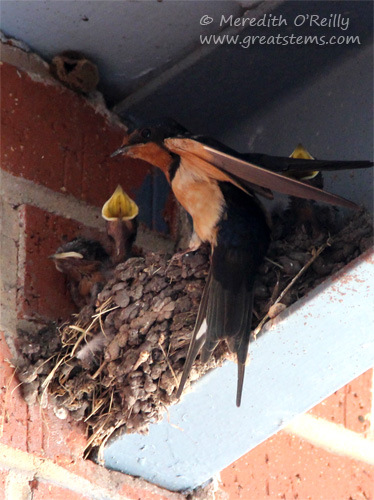
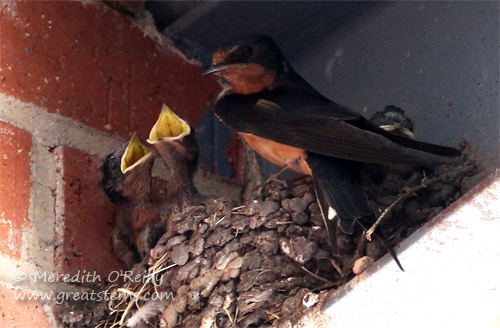
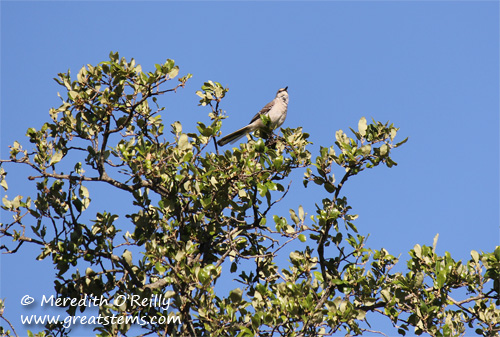 Sometimes for hours and hours. Silly birdie.
Sometimes for hours and hours. Silly birdie.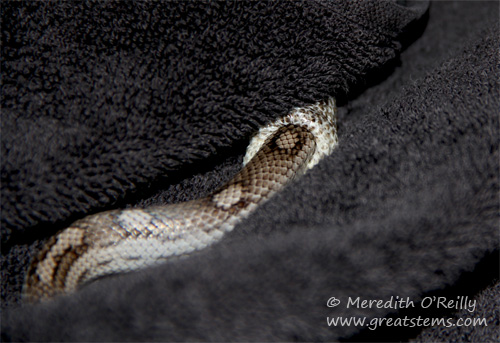 Normally when the snakes shed, they do it in the privacy of their habitat. One day I took the snakes out to feed them, and Morse, a motley-patterned corn snake, started rubbing his cute little head all over the towel I had him on.
Normally when the snakes shed, they do it in the privacy of their habitat. One day I took the snakes out to feed them, and Morse, a motley-patterned corn snake, started rubbing his cute little head all over the towel I had him on.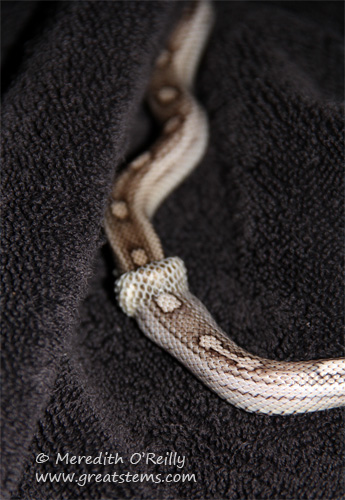 Next thing we knew, we were watching the full shedding process, something I’d never witnessed before. The shed skin rolled off him like old-style stockings, until toward the tail’s end it reversed and extended as Morse pulled away from it. Shedding done, Morse was quite ready to eat!
Next thing we knew, we were watching the full shedding process, something I’d never witnessed before. The shed skin rolled off him like old-style stockings, until toward the tail’s end it reversed and extended as Morse pulled away from it. Shedding done, Morse was quite ready to eat! Walker, the corn/rat snake hybrid, has all the expected instincts of a snake, and that makes him great to observe, because he is certainly observing you and everything else. I like to wander around with him so that he can safely explore new things. Though we feed our snakes thawed rodents, he attacks his dead prey with all ferocity. We use tongs so that we are not handling the mice directly, and if I hold onto the end of a mouse for a just a couple of seconds after Walker’s latched on, he quickly coils all around the mouse, constricting it just like all good constrictors do. I have got to videotape it sometime.
Walker, the corn/rat snake hybrid, has all the expected instincts of a snake, and that makes him great to observe, because he is certainly observing you and everything else. I like to wander around with him so that he can safely explore new things. Though we feed our snakes thawed rodents, he attacks his dead prey with all ferocity. We use tongs so that we are not handling the mice directly, and if I hold onto the end of a mouse for a just a couple of seconds after Walker’s latched on, he quickly coils all around the mouse, constricting it just like all good constrictors do. I have got to videotape it sometime.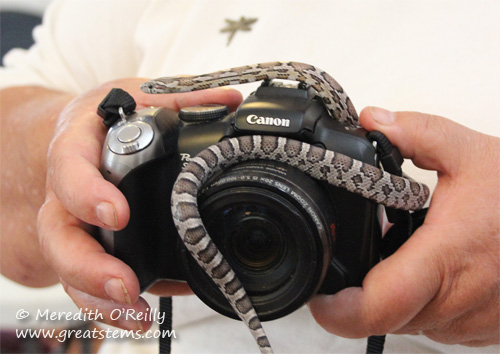 Walker and Morse are destined to be teaching snakes. They had their first classroom visit of sorts at the Master Naturalist training this past spring. Here my friend Christine tried to take a picture of Walker, but of course Walker had other ideas.
Walker and Morse are destined to be teaching snakes. They had their first classroom visit of sorts at the Master Naturalist training this past spring. Here my friend Christine tried to take a picture of Walker, but of course Walker had other ideas.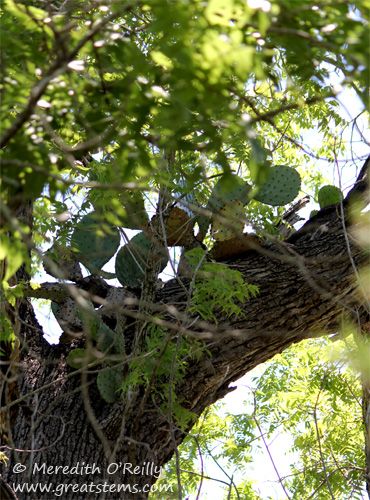
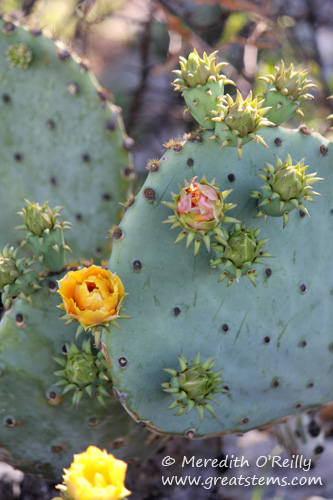
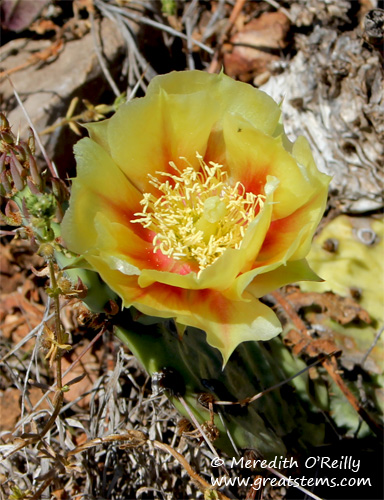
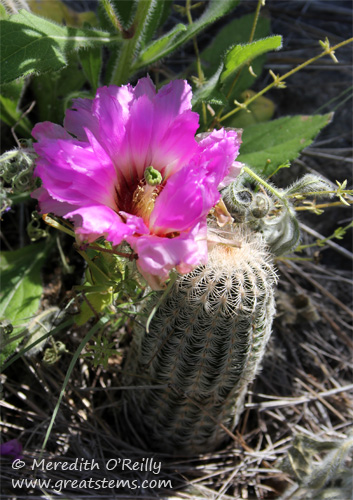
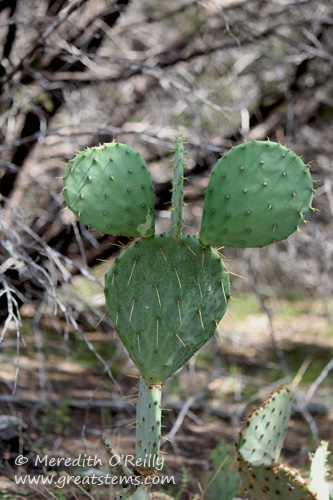
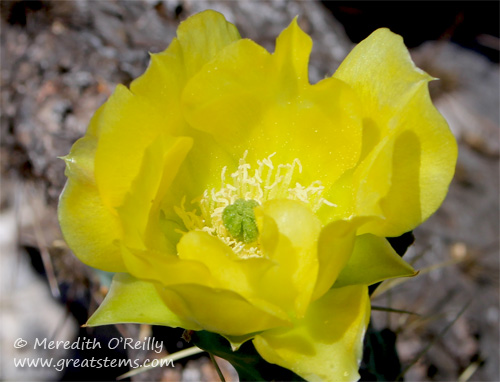
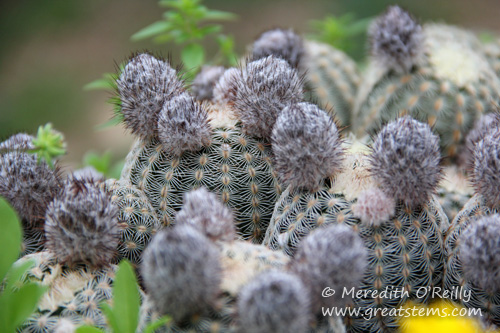
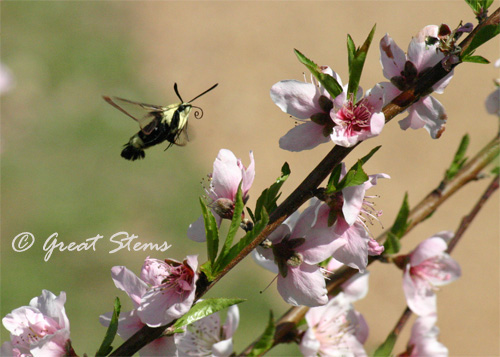
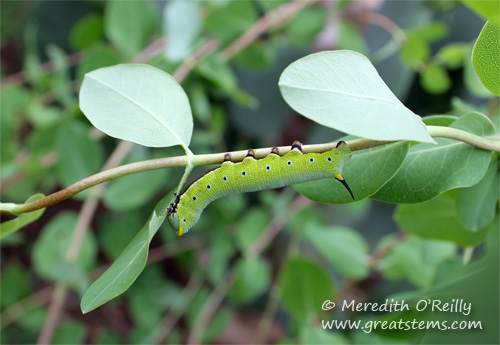
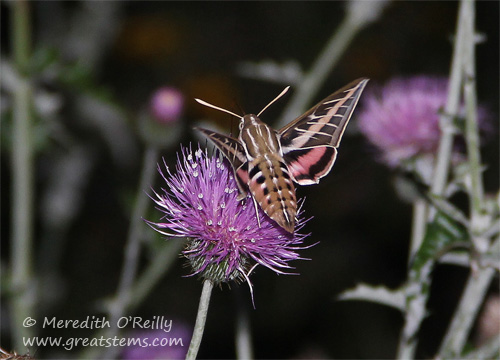
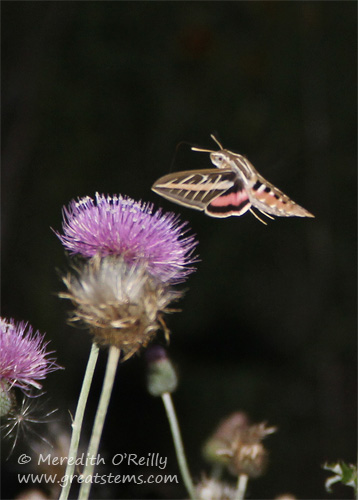
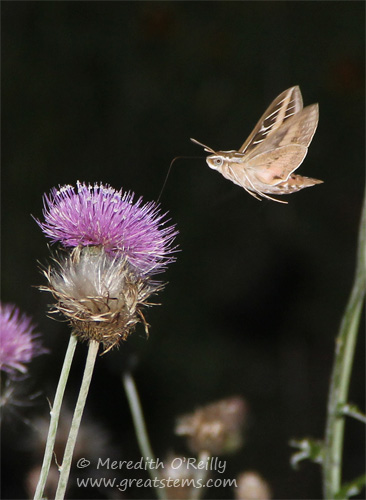
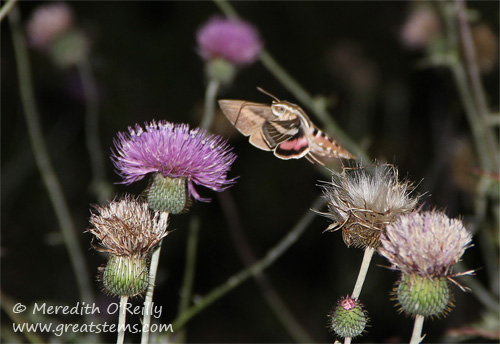
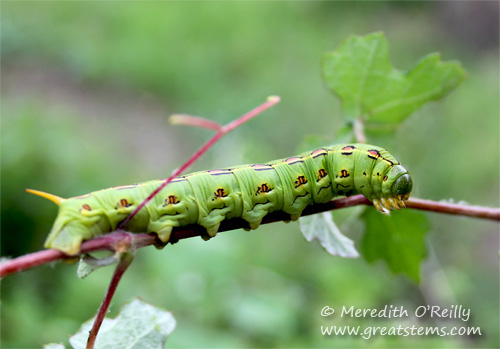
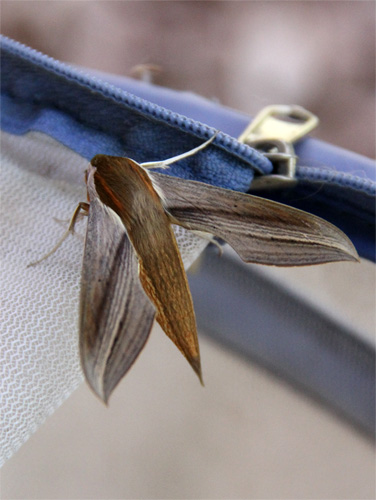
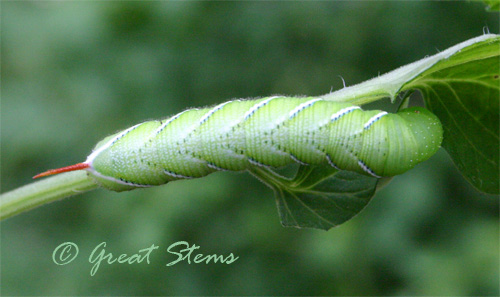
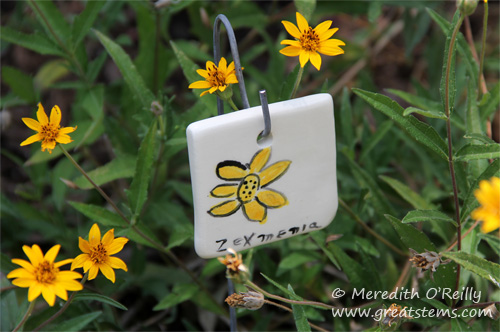
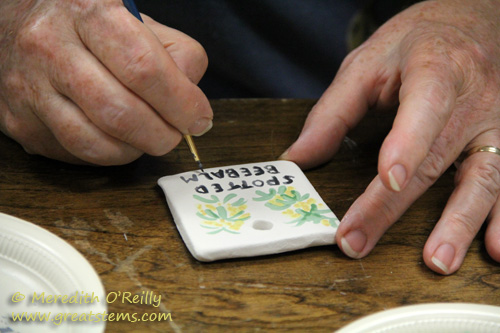


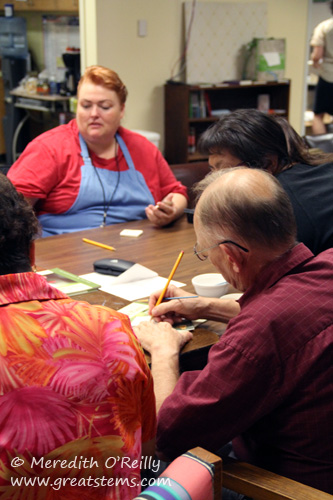
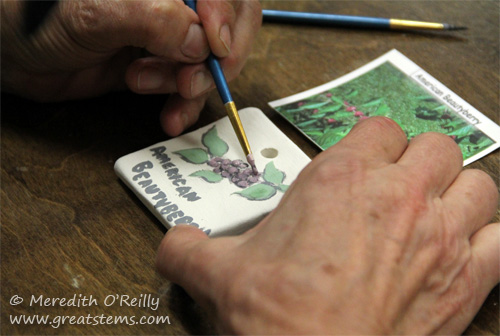
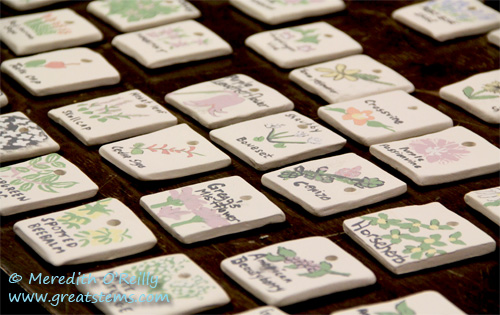 The painting party was a delight, as were each of the participating AGE clientele, and the results are better than we ever imagined. Each marker is hand-painted and unique, making them all very special, but the best part is how heart-warming every part of this project has been.
The painting party was a delight, as were each of the participating AGE clientele, and the results are better than we ever imagined. Each marker is hand-painted and unique, making them all very special, but the best part is how heart-warming every part of this project has been.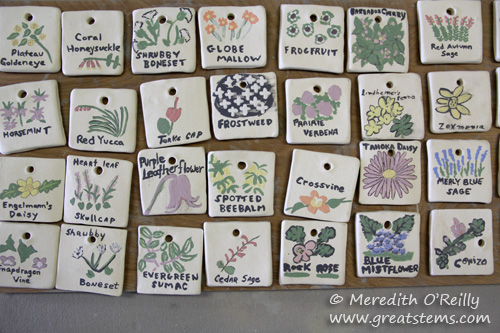
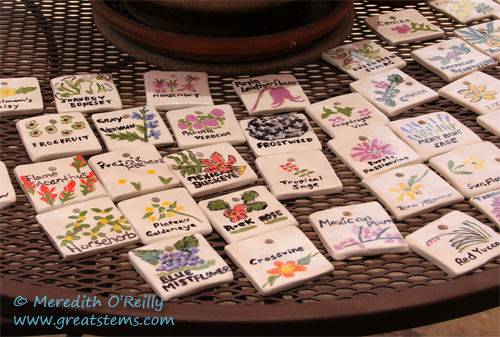
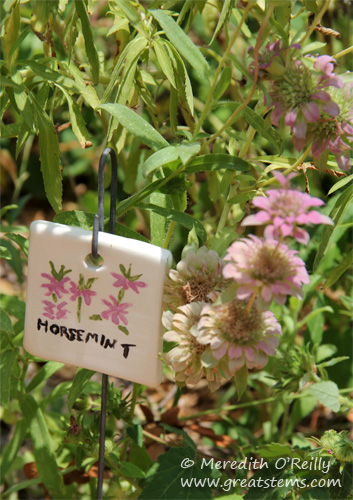
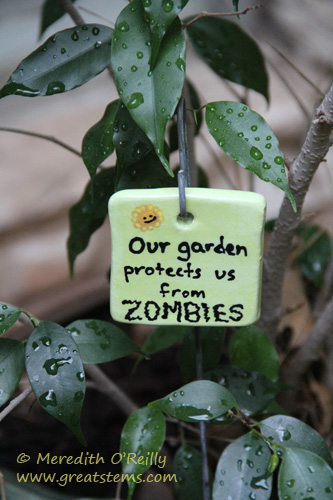 Never underestimate the power of plants!
Never underestimate the power of plants!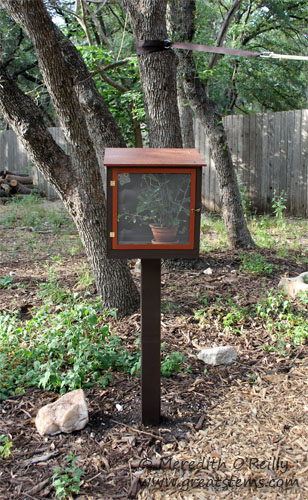
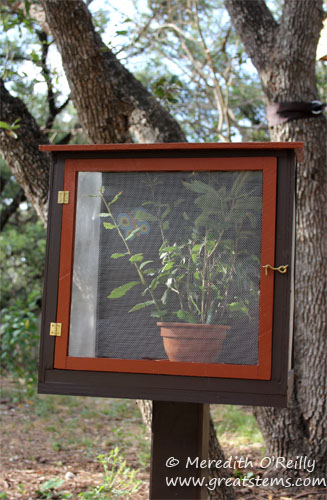
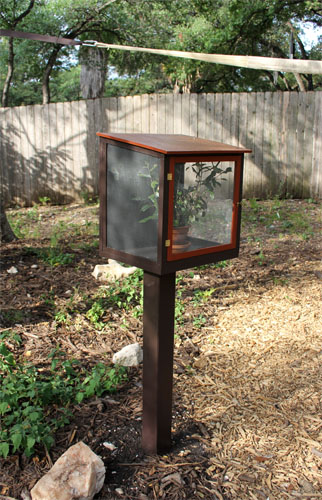
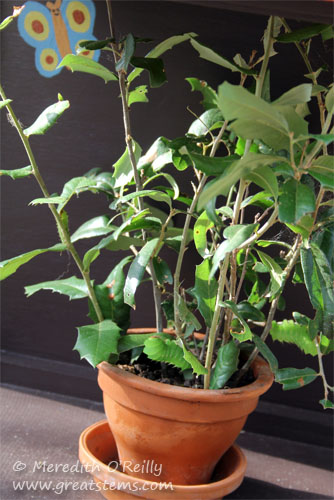
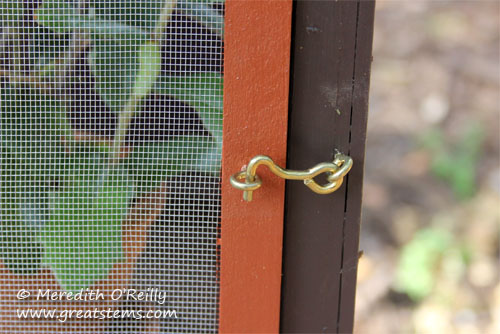
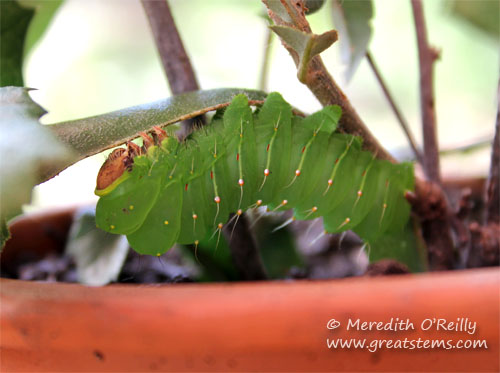
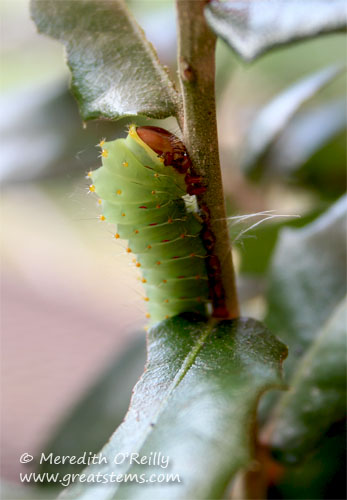
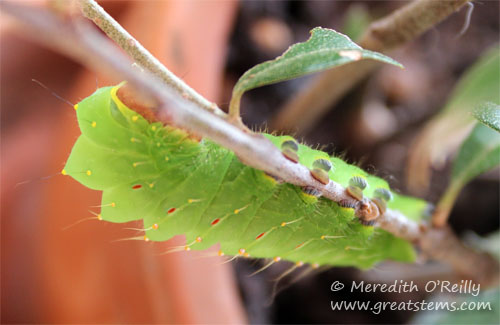
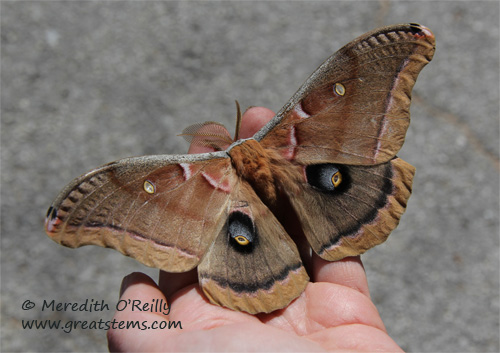 You might recall the
You might recall the 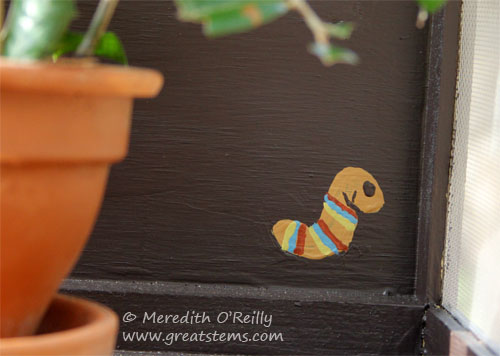

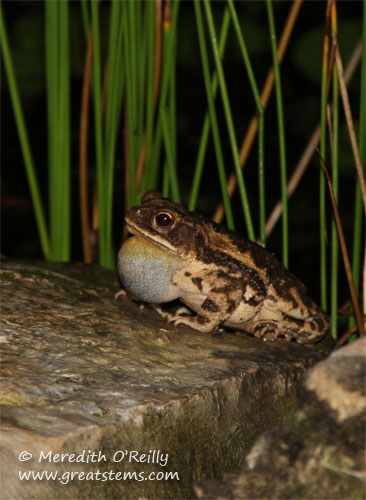
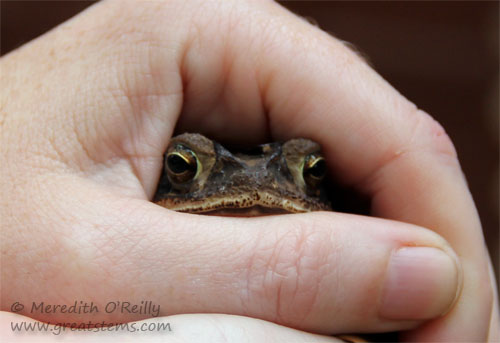
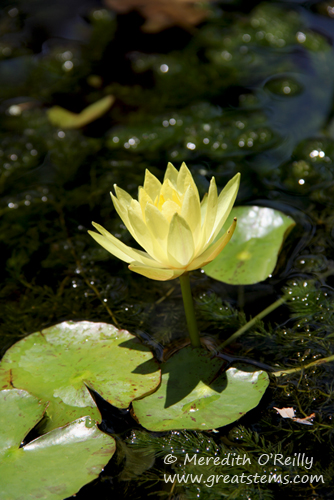
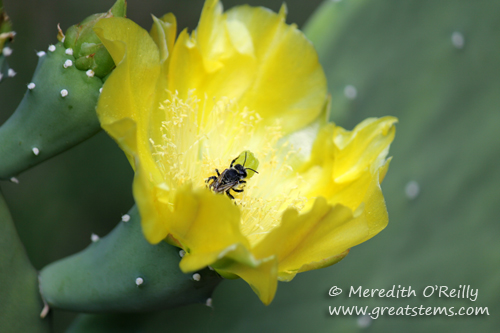
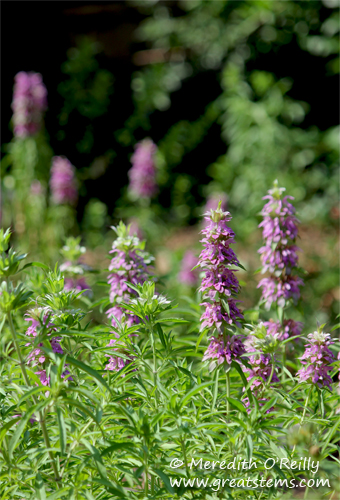
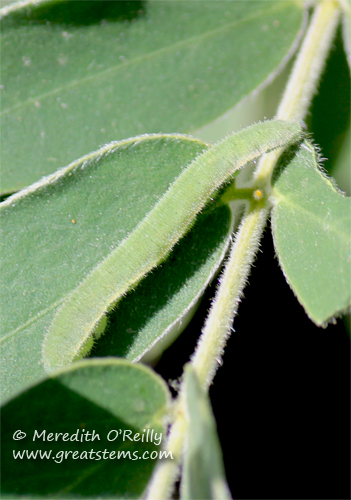
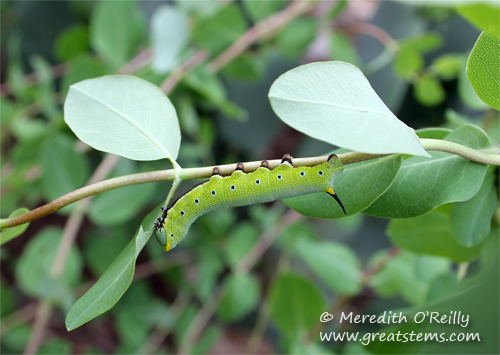
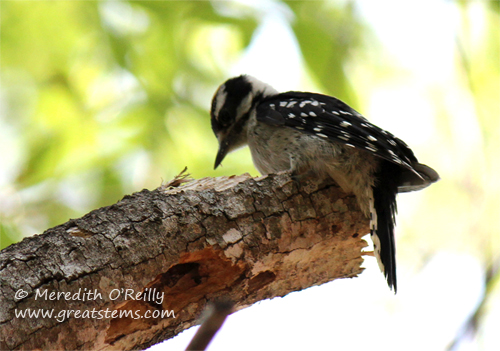
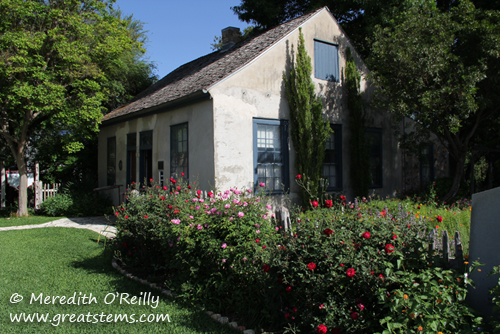
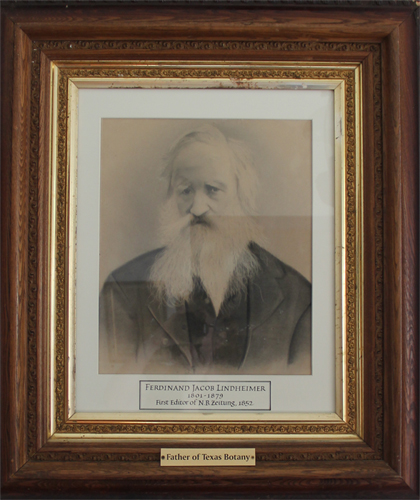
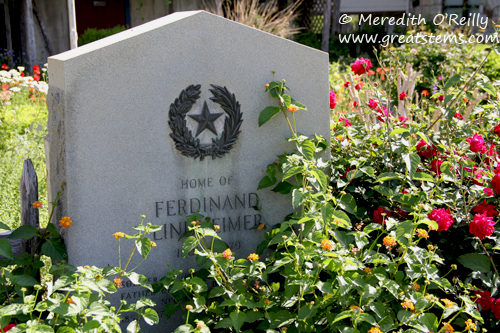 Ferdinand Jacob Lindheimer was born on May 21, 1802 (some sources say 1801), in Frankfurt, Germany. Immigrating to the United States in 1834 during a time of political unrest in Germany, Lindheimer traveled first to Illinois and then to Mexico by way of New Orleans. For a short while, he worked on a couple of plantations in Mexico, collecting plants and insects in his spare time. Upon hearing about the Texas Revolution, however, he returned north to enlist in the army, missing the Battle of San Jacinto by a day. After completing his time in the army, Lindheimer farmed for a short while in the Houston area, all the while studying Texas plants and insects.
Ferdinand Jacob Lindheimer was born on May 21, 1802 (some sources say 1801), in Frankfurt, Germany. Immigrating to the United States in 1834 during a time of political unrest in Germany, Lindheimer traveled first to Illinois and then to Mexico by way of New Orleans. For a short while, he worked on a couple of plantations in Mexico, collecting plants and insects in his spare time. Upon hearing about the Texas Revolution, however, he returned north to enlist in the army, missing the Battle of San Jacinto by a day. After completing his time in the army, Lindheimer farmed for a short while in the Houston area, all the while studying Texas plants and insects. 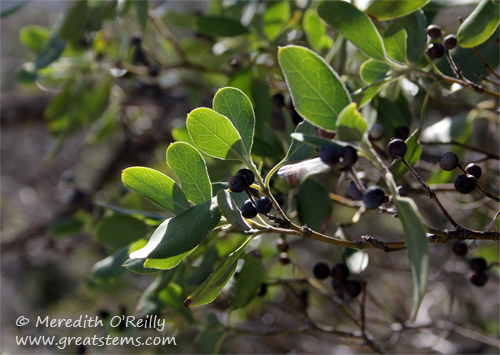
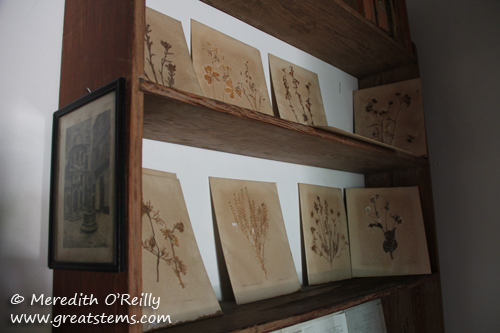 Through Lindheimer’s letters, we learn of his fondness for sweet native grapes and how pecans and persimmons were regular food sources. We learn of different wildlife he encountered, his attention to physical fitness and health, his understanding of local Native American tribes, and just how many species of cacti and yucca there really are in Texas.
Through Lindheimer’s letters, we learn of his fondness for sweet native grapes and how pecans and persimmons were regular food sources. We learn of different wildlife he encountered, his attention to physical fitness and health, his understanding of local Native American tribes, and just how many species of cacti and yucca there really are in Texas. 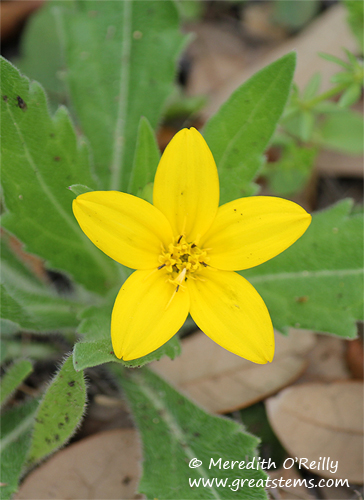

 Lindheimer was known for his mild voice but strong opinions. He was an active supporter of freedom and justice.
Lindheimer was known for his mild voice but strong opinions. He was an active supporter of freedom and justice.  For 20 years, Lindheimer served as the first editor of the Neu-Braunfelser Zeitung, a bilingual German-English newspaper that lasted more than a century. He published the newspaper from his house and included his own sometimes controversial writings. He was involved in local education and served as the county’s first Justice of the Peace. After his retirement, Lindheimer returned to his passion for Texas plants, until his death on December 2, 1879.
For 20 years, Lindheimer served as the first editor of the Neu-Braunfelser Zeitung, a bilingual German-English newspaper that lasted more than a century. He published the newspaper from his house and included his own sometimes controversial writings. He was involved in local education and served as the county’s first Justice of the Peace. After his retirement, Lindheimer returned to his passion for Texas plants, until his death on December 2, 1879.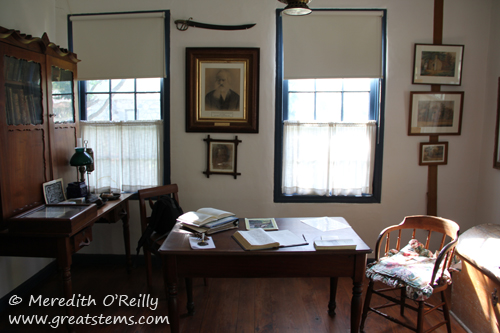 Today the Lindheimer Home is under the care of the
Today the Lindheimer Home is under the care of the 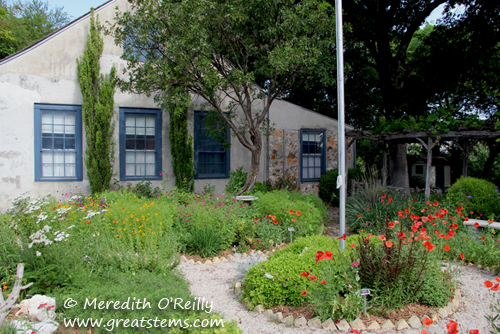
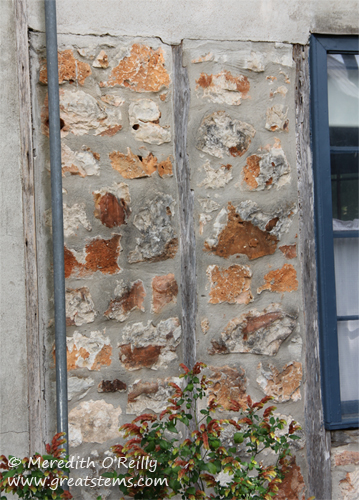 Stucco covers three sides of the main building, with the remaining surface exposing the fachwerk, or half-timbering, technique employed by German settlers, with rocks or brick filling space between the timbers.
Stucco covers three sides of the main building, with the remaining surface exposing the fachwerk, or half-timbering, technique employed by German settlers, with rocks or brick filling space between the timbers.  The house has a second-story loft, as well as a cellar, and a second building sits where the former outhouse had been.
The house has a second-story loft, as well as a cellar, and a second building sits where the former outhouse had been. 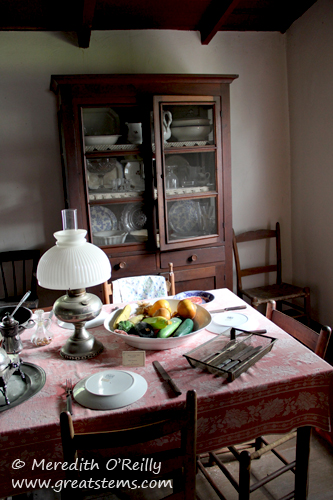 Inside, one sees much of the original furniture used by Lindheimer and his family.
Inside, one sees much of the original furniture used by Lindheimer and his family. 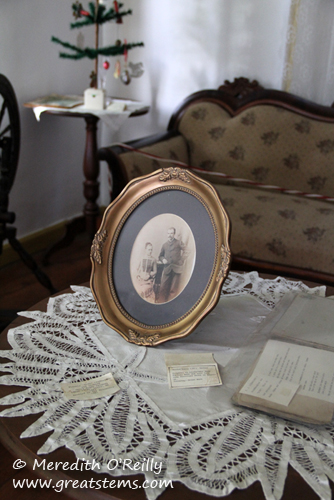 Original newspapers and plant specimens, as well as photographs and other items, are out on display. The image above is Lindheimer’s granddaughter Sida and her husband.
Original newspapers and plant specimens, as well as photographs and other items, are out on display. The image above is Lindheimer’s granddaughter Sida and her husband.
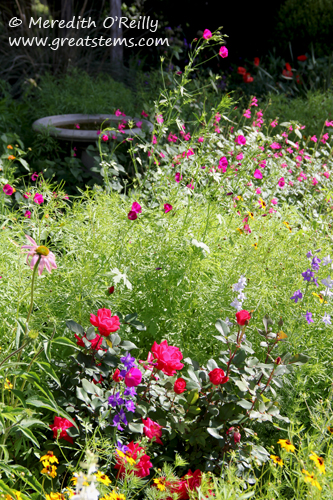 The
The 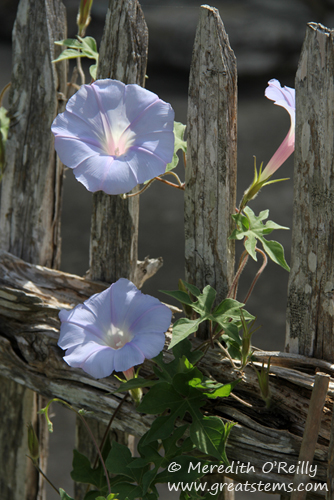 Lindheimer Morning Glory (Ipomoea lindheimeri)
Lindheimer Morning Glory (Ipomoea lindheimeri)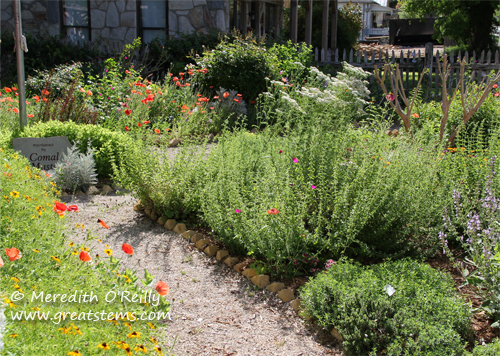 The Master Gardeners visiting with us said they hope to continue increasing the Lindheimer plants, especially those well suited for a garden (for not all of the Lindheimer plants would qualify as being ideal choices). After reading Lindheimer’s letters that accompanied his plant specimen shipments to Engelmann, I’d like to also suggest continuing to add native plant species that Lindheimer particularly loved collecting from the Texas wild – what fun it would be to research those! For it cannot be questioned that Lindheimer’s true passion was Texas flora, not just collecting it but experiencing adventure along the way.
The Master Gardeners visiting with us said they hope to continue increasing the Lindheimer plants, especially those well suited for a garden (for not all of the Lindheimer plants would qualify as being ideal choices). After reading Lindheimer’s letters that accompanied his plant specimen shipments to Engelmann, I’d like to also suggest continuing to add native plant species that Lindheimer particularly loved collecting from the Texas wild – what fun it would be to research those! For it cannot be questioned that Lindheimer’s true passion was Texas flora, not just collecting it but experiencing adventure along the way. 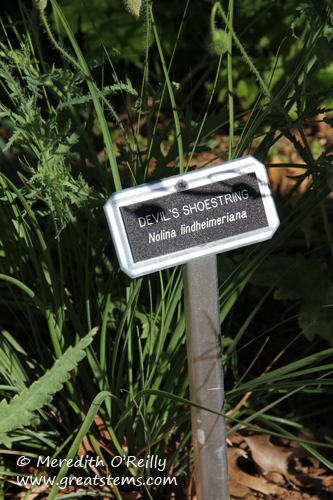 Today, many plant species (and one snake) bear the name Lindheimer in their scientific name. Depending on the source, there are at least 30 such species and possibly more than 40, but with taxonomic changes happening all the time, there is no way for me to confirm an accurate number. But after touring the Lindheimer Home and gardens and knowing that I intended to write this article, I decided to increase my personal collection of plants named for Lindheimer, and so far I am up to at least 7 (there might be others on the property):
Today, many plant species (and one snake) bear the name Lindheimer in their scientific name. Depending on the source, there are at least 30 such species and possibly more than 40, but with taxonomic changes happening all the time, there is no way for me to confirm an accurate number. But after touring the Lindheimer Home and gardens and knowing that I intended to write this article, I decided to increase my personal collection of plants named for Lindheimer, and so far I am up to at least 7 (there might be others on the property): 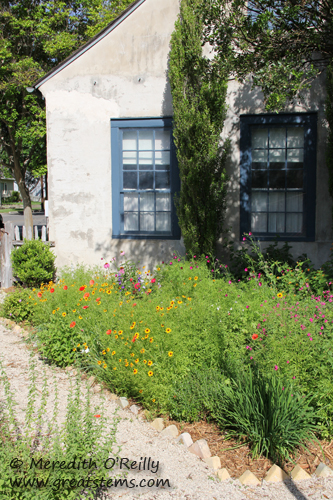 Thank you to John Turner of the New Braunfels Conservation Society and to the Comal Master Gardeners for sharing a moment in time with Lindheimer with me. The friendliness of my tour guides, my love of Texas botany, and my being a former resident of New Braunfels made my visit just like coming home. Plus I had a great time speaking to the 2012 Master Gardener class. On the way home, I viewed wildflowers in the Texas Hill Country. What a great day!
Thank you to John Turner of the New Braunfels Conservation Society and to the Comal Master Gardeners for sharing a moment in time with Lindheimer with me. The friendliness of my tour guides, my love of Texas botany, and my being a former resident of New Braunfels made my visit just like coming home. Plus I had a great time speaking to the 2012 Master Gardener class. On the way home, I viewed wildflowers in the Texas Hill Country. What a great day!